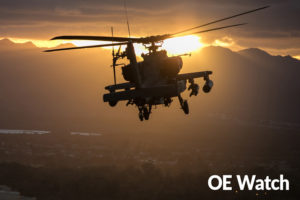Posts Tagged ‘artillery’
Russia Addressing Missing Links in Kill Chain
by WO2 Blair Battersby, UK LNO to TRADOC G-2 Observations from the Russia-Ukraine War provide insight into Russia’s remedies to address critical gaps in its kill chain, providing the U.S Army with the opportunity to prepare for an optimized adversary during today’s training events. Russia has struggled to deliver dynamic, precision fires with the efficiency…
READ STORYSmart Phones Playing Prominent Role in Russia-Ukraine War
by Kevin Freese, TRADOC G-2 Analyst Combatants have used civilian communications networks since the invention of the telegraph, and wireless communications are no exception. Cellular phones provided targeting information and became targets themselves throughout the Global War on Terror. Smart phones have played a major role for several years now in strategic messaging and information operations.…
READ STORYTRADOC: LSCO Challenge – Russia’s Sensor-to-Shooter Challenges in Ukraine (INTELINK-U)
LSCO Challenge: Russia’s Sensor-to-Shooter Challenges in Ukraine Available on Intelink-U at https://go.intelink.gov/jKMgAhl About This Series: The challenges that Russia has encountered as result of extended large-scale combat operations (LSCO) reveal key object lessons for TRADOC and the broader Army. This series—titled “LSCO Challenges”—will focus on issues that the Russian Armed Forces are presenting in Ukraine,…
READ STORYLSCO Challenge: Russia’s Sensor-to-Shooter Challenges in Ukraine (INTELINK-U)
LSCO Challenge: Russia’s Sensor-to-Shooter Challenges in Ukraine Available on Intelink-U at https://go.intelink.gov/jKMgAhl About This Series: The challenges that Russia has encountered as result of extended large-scale combat operations (LSCO) reveal key object lessons for TRADOC and the broader Army. This series—titled “LSCO Challenges”—will focus on issues that the Russian Armed Forces are presenting in Ukraine,…
READ STORYOE Watch, Vol. 10 (Iss. 07)
The July issue of OE Watch continues to feature foreign perspectives on the OE, particularly on how Russia and China are leveraging emerging technologies and foreign presence to exploit opportunities in their respective areas of interest, as well as a variety of topics related to COVID-19 and security affairs. Several articles look at recent Russian…
READ STORYOE Watch, Vol. 10 (Iss. 06)
The June issue of OE Watch continues its broad coverage of foreign perspectives of the operational environment, as well as continuing special focus on foreign, security-related perspectives on the COVID-19 pandemic. In the Eurasia section, three articles consider how countries in the region are adapting their military conscriptions to address the pandemic (“Alternate Medical Service…
READ STORYOE Watch, Vol. 10 (Iss. 04)
As Russia gears up to celebrate the 75th anniversary of its “Great Patriotic War” in May, efforts to develop a state ideology based on “military patriotism” are apparent (“Great Patriotic Victory: Developing Military Patriotism in Russian Society and Military”). The April issue of OE Watch also continues to look at the Russian military’s improved combat…
READ STORY






